[ad_1]
What are the metabolic and behavioral diversifications that sluggish weight reduction?
Due to tens of millions of years of evolution hard-wiring us to outlive shortage, our physique has compensatory survival mechanisms to defend towards weight reduction. Once we begin shedding weight, we might unconsciously start to maneuver much less as a “behavioral adaptation” to preserve power. There are metabolic diversifications as nicely; our metabolism slows down. Each pound of weight reduction might cut back our resting metabolic price by seven energy a day. This will solely translate to a couple % variations for many, however it could quickly snowball for many who obtain huge weight reduction. I talk about this phenomenon in my video The Purpose Weight Loss Plateaus When You Weight-reduction plan.
Throughout one season of the tv present The Greatest Loser, a number of the contestants famously had their metabolic charges tracked. As you may see within the graphs under, above and past the tons of of fewer energy it takes to only exist when greater than 100 kilos lighter (at 0:55 in my video), by the tip of the season, their metabolic charges had slowed by an additional 500 energy a day (at 1:03 in my video).
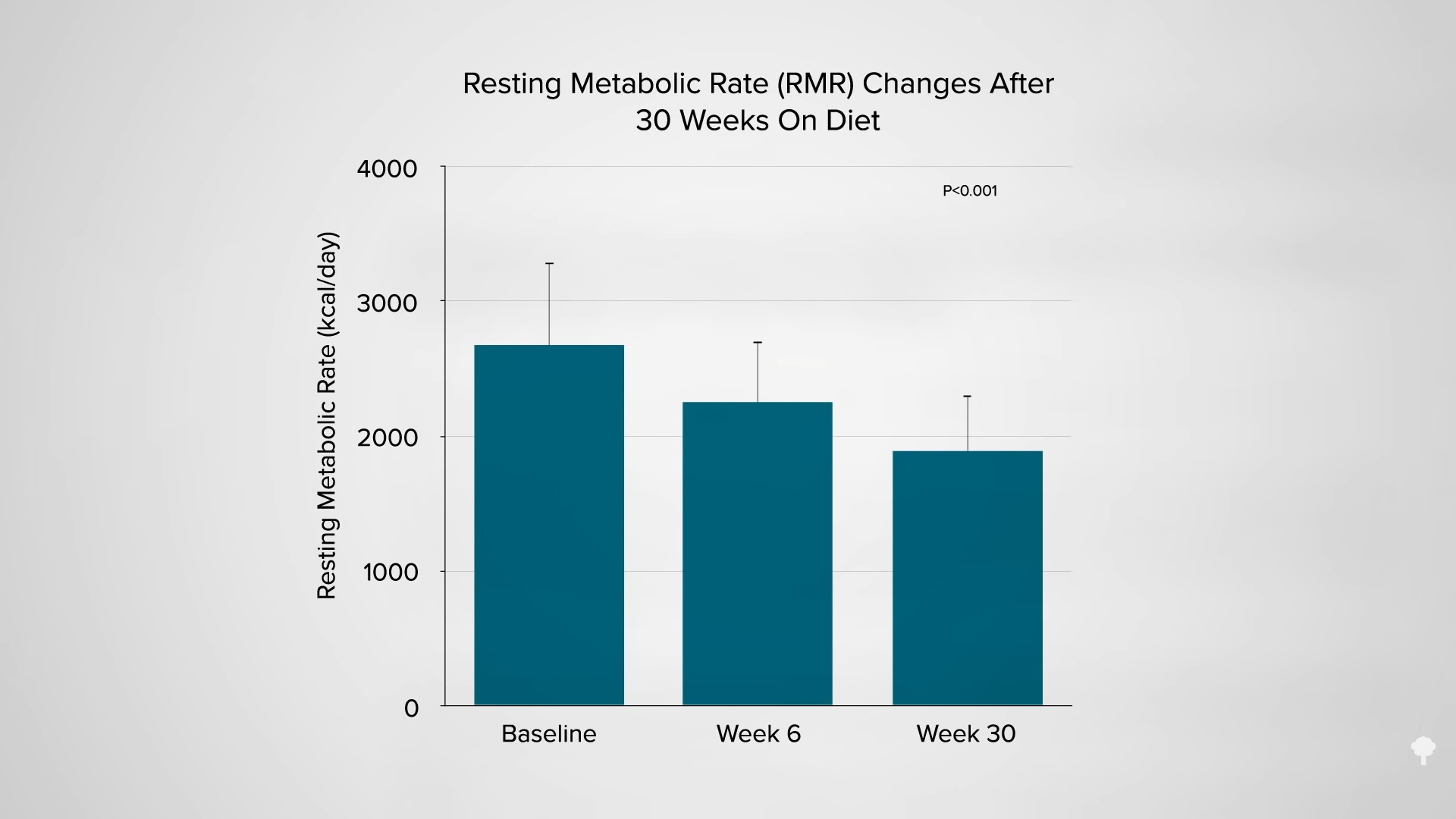
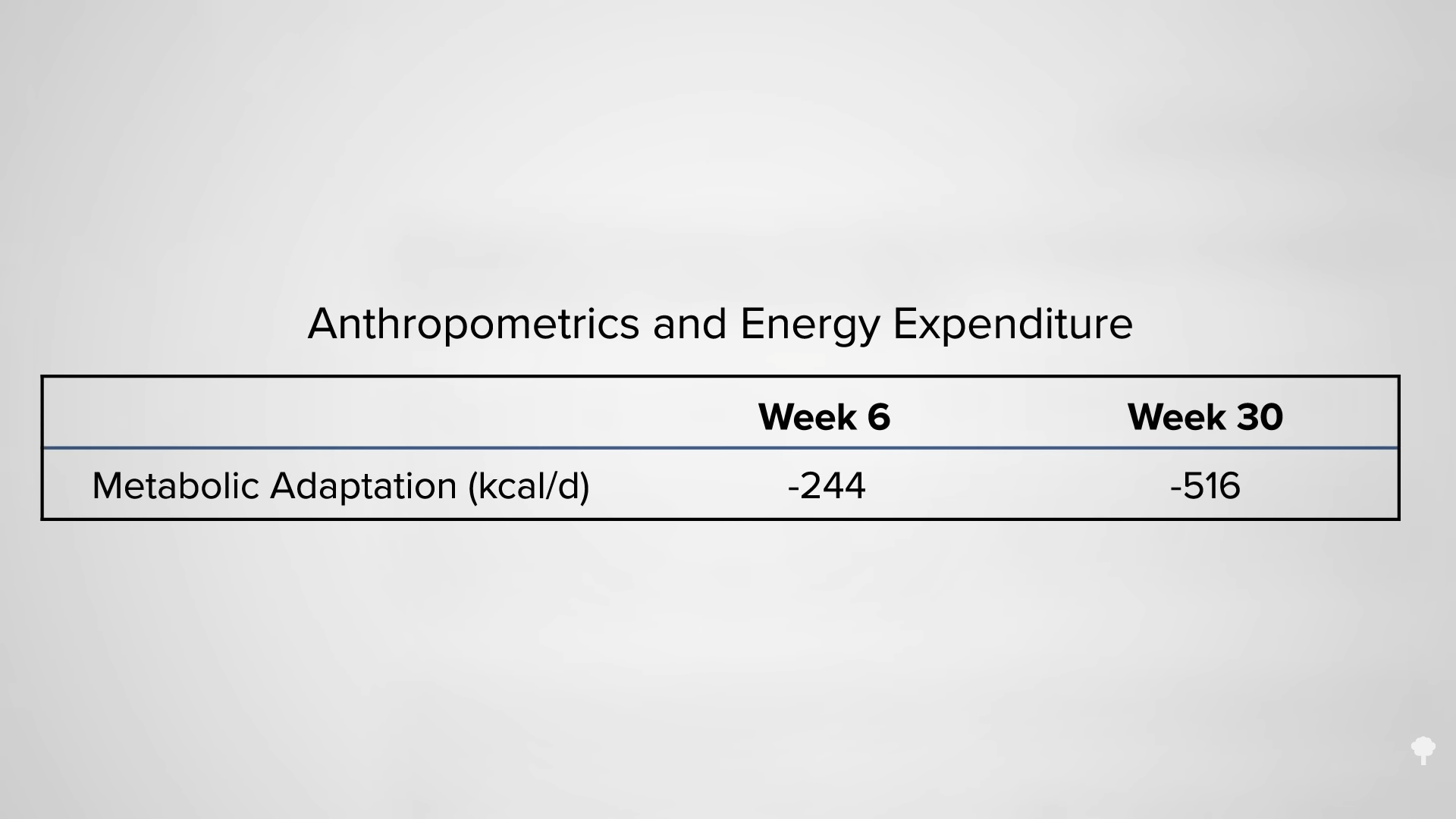
What’s mind-blowing is that after they have been retested six years later, they nonetheless had the 500-calorie-a-day handicap. So, the contestants needed to minimize 500 extra energy than anybody else their dimension to take care of the identical weight reduction. No surprise the majority of their weight reduction was regained. As you may see within the graph under and at 1:23 in my video, most remained no less than 10 % decrease than their beginning weight, although.
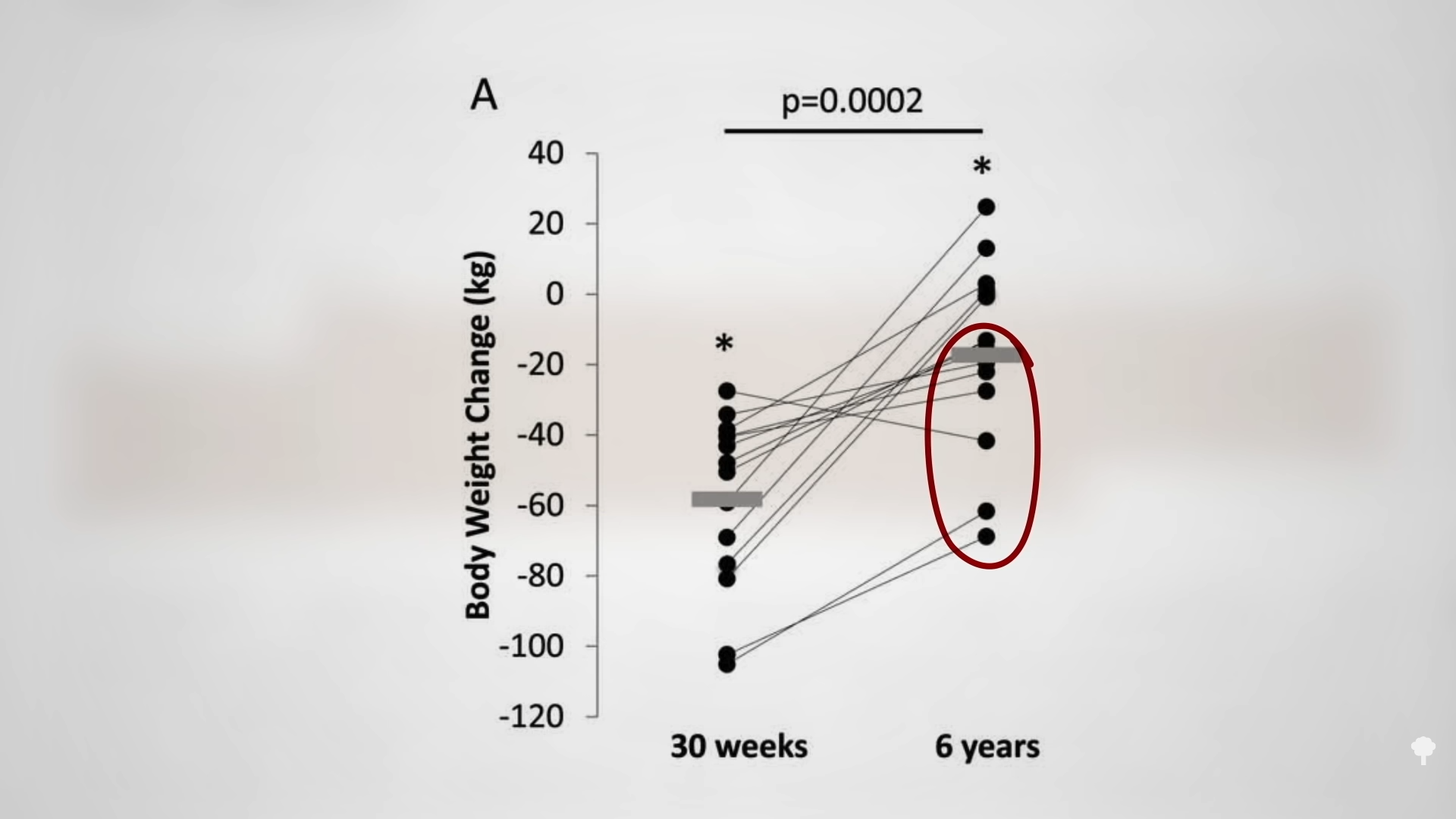
Even a 7 % drop has been proven to chop diabetes charges about in half, as seen within the graph under and at 1:31 in my video. Nonetheless, the metabolic slowing means you must work that a lot more durable than everybody else simply to remain in place. 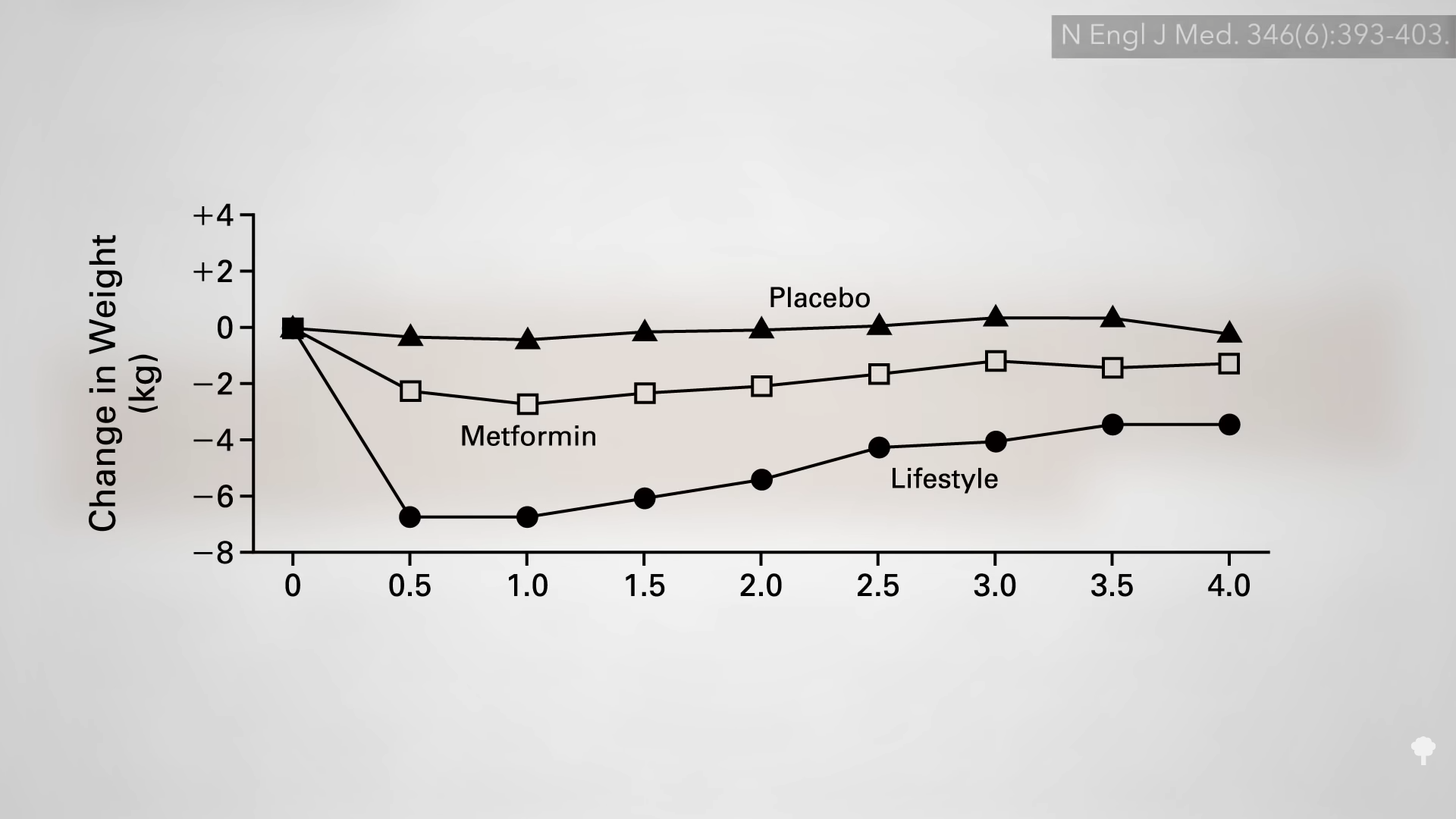 Analyzing 4 seasons of The Greatest Loser minute-by-minute, researchers famous that 85 % of the main focus was on train moderately than food regimen, although the train part accounted for lower than half of the burden loss. Even six years after their season ended, the contestants had been sustaining an hour of each day, vigorous train, but nonetheless regained a lot of the weight that they had misplaced. Why? As a result of that they had began consuming extra. They may have restricted their train to only 20 minutes a day and nonetheless maintained 100 % of their preliminary weight reduction if that they had simply been in a position to hold their consumption to lower than 3,000 energy a day. That won’t sound like a lot of a problem, however weight reduction doesn’t simply sluggish your metabolism. It additionally boosts your urge for food.
Analyzing 4 seasons of The Greatest Loser minute-by-minute, researchers famous that 85 % of the main focus was on train moderately than food regimen, although the train part accounted for lower than half of the burden loss. Even six years after their season ended, the contestants had been sustaining an hour of each day, vigorous train, but nonetheless regained a lot of the weight that they had misplaced. Why? As a result of that they had began consuming extra. They may have restricted their train to only 20 minutes a day and nonetheless maintained 100 % of their preliminary weight reduction if that they had simply been in a position to hold their consumption to lower than 3,000 energy a day. That won’t sound like a lot of a problem, however weight reduction doesn’t simply sluggish your metabolism. It additionally boosts your urge for food.
If it have been only a matter of your weight settling on the level at which your decreased caloric consumption matches your decreased caloric output, it will take years to your weight reduction to plateau. As a substitute, it typically occurs inside six to eight months. You possibly can see illustrative graphs under and at 2:34 and a couple of:43 in my video. You might know the drill: Begin the food regimen, follow the food regimen, then weight reduction stalls six months later. What occurred? Don’t blame your metabolism—that solely performs a small half. As a substitute, you probably stopped sticking to your food regimen as a result of your urge for food went on a rampage.
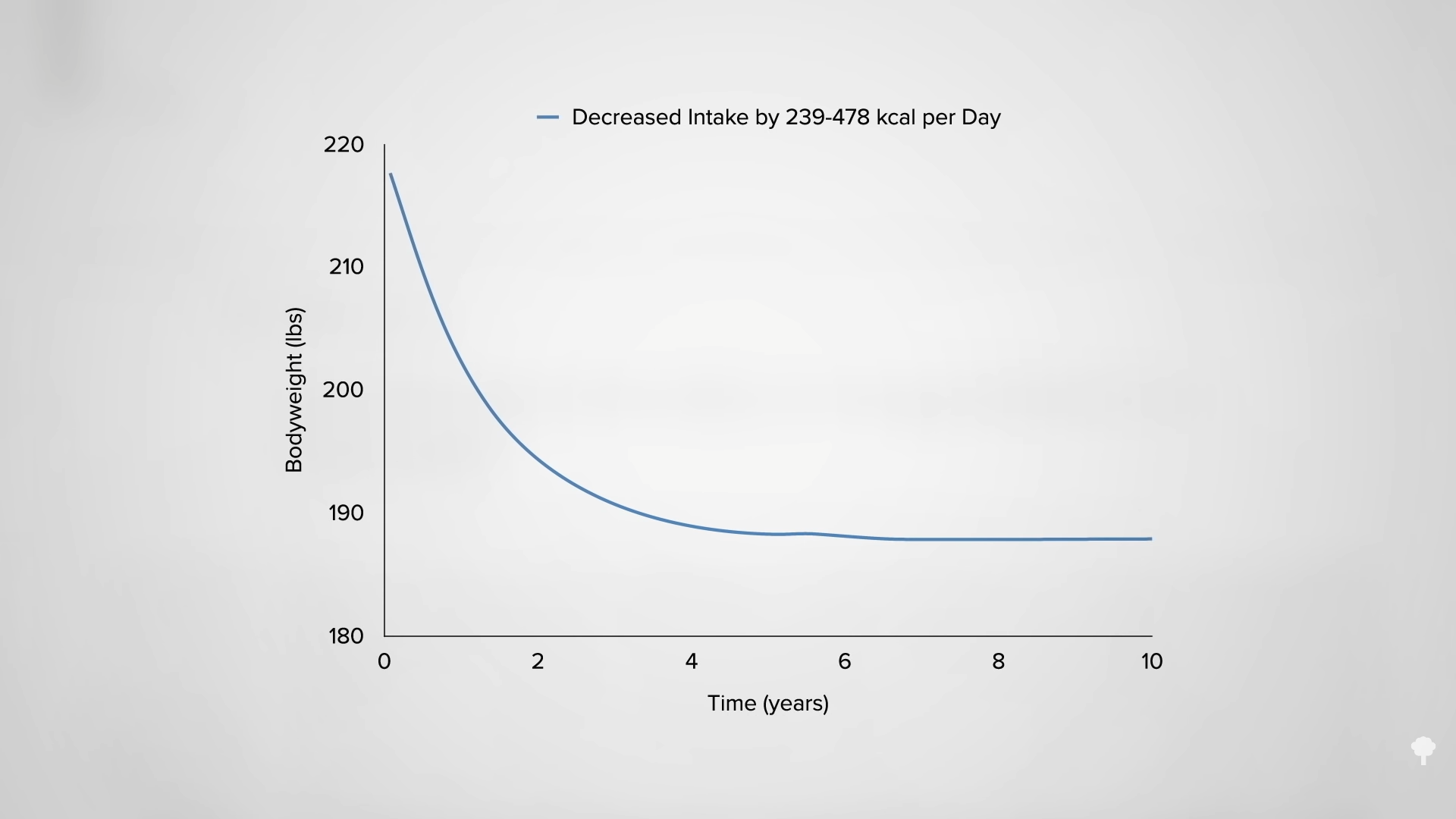
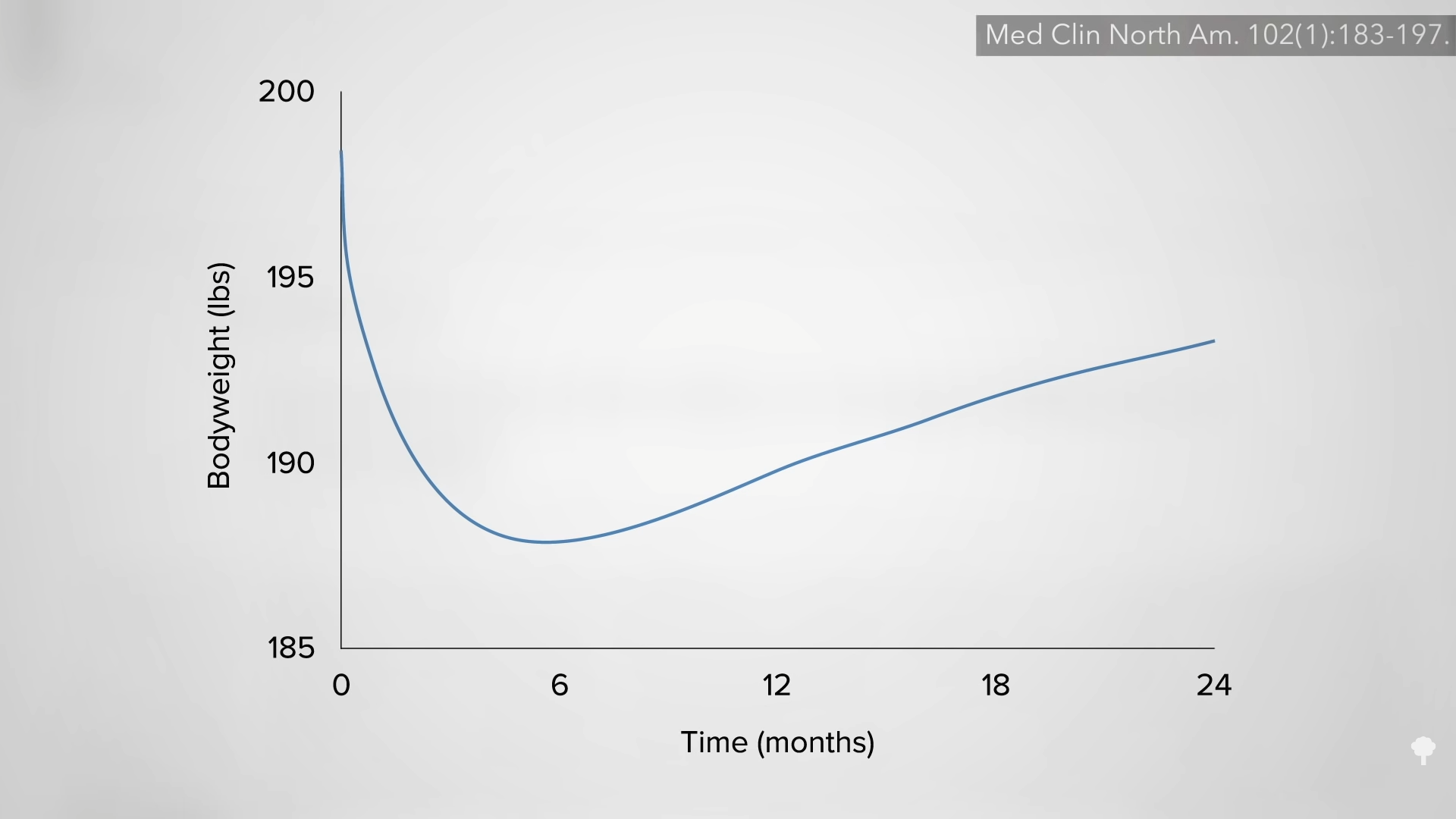 Let’s break it down. In the event you minimize 800 energy out of your each day food regimen—going from 2,600 energy a day all the way down to 1,800, as an illustration—and your weight reduction stalls after six months, what might have occurred is, on the finish of the primary month, you suppose you’re nonetheless chopping 800 energy, however you may very well solely be down about 600 energy a day. By month two, you could solely be down about 500 energy, 300 by month three, and, by month six, you could solely be consuming 200 energy lower than earlier than you went on the food regimen. In different phrases, you could have inadvertently suffered an exponential enhance in caloric consumption over these six months. However, you could not even understand it as a result of, by that point, your physique might have ramped up your urge for food by 600 energy. So, it nonetheless feels as in case you are consuming 800 energy much less, however it’s really solely 200 fewer energy. Since an 800-calorie drop in consumption might sluggish your metabolism and bodily exercise by about 200 energy a day, with no distinction between energy in and energy out at six months, no surprise your weight reduction grinds to a whole halt.
Let’s break it down. In the event you minimize 800 energy out of your each day food regimen—going from 2,600 energy a day all the way down to 1,800, as an illustration—and your weight reduction stalls after six months, what might have occurred is, on the finish of the primary month, you suppose you’re nonetheless chopping 800 energy, however you may very well solely be down about 600 energy a day. By month two, you could solely be down about 500 energy, 300 by month three, and, by month six, you could solely be consuming 200 energy lower than earlier than you went on the food regimen. In different phrases, you could have inadvertently suffered an exponential enhance in caloric consumption over these six months. However, you could not even understand it as a result of, by that point, your physique might have ramped up your urge for food by 600 energy. So, it nonetheless feels as in case you are consuming 800 energy much less, however it’s really solely 200 fewer energy. Since an 800-calorie drop in consumption might sluggish your metabolism and bodily exercise by about 200 energy a day, with no distinction between energy in and energy out at six months, no surprise your weight reduction grinds to a whole halt.
The sluggish upward drift in caloric consumption on a brand new food regimen is just not since you received lazy. As soon as your urge for food is boosted by 600 energy after weight-reduction plan for some time, consuming 200 fewer energy on the finish is as onerous as consuming 800 fewer energy in the beginning. So, you may keep the identical disciplined degree of willpower and self-control but nonetheless find yourself stagnating. To stop this from occurring, you have to keep the calorie deficit. How is that doable within the face of a ravenous urge for food?
Starvation is a organic drive. Asking somebody to eat smaller parts is like asking somebody to take fewer breaths. You possibly can white-knuckle it for a bit, however, ultimately, nature wins out. That’s why I wrote How To not Weight-reduction plan. There are meals that may counter the slowing of our metabolism and suppress our urge for food, in addition to methods of consuming to counter the behavioral adaptation and even eat extra meals—but nonetheless reduce weight.
Attributable to “the continued slowing of metabolism and elevated urge for food related to the misplaced weight,” sustained weight reduction requires a persistent calorie deficit of 300 to 500 energy a day. This may be achieved with out decreasing portion sizes just by decreasing the calorie density of meals, which can lead to the uncommon mixture of weight reduction with each a rise in high quality and even amount of meals consumed. (See the 2 graphs under and at 5:34 and 5:40 in my video.) The underside line is that sustainable weight reduction is just not about consuming much less meals. It’s about consuming higher meals.
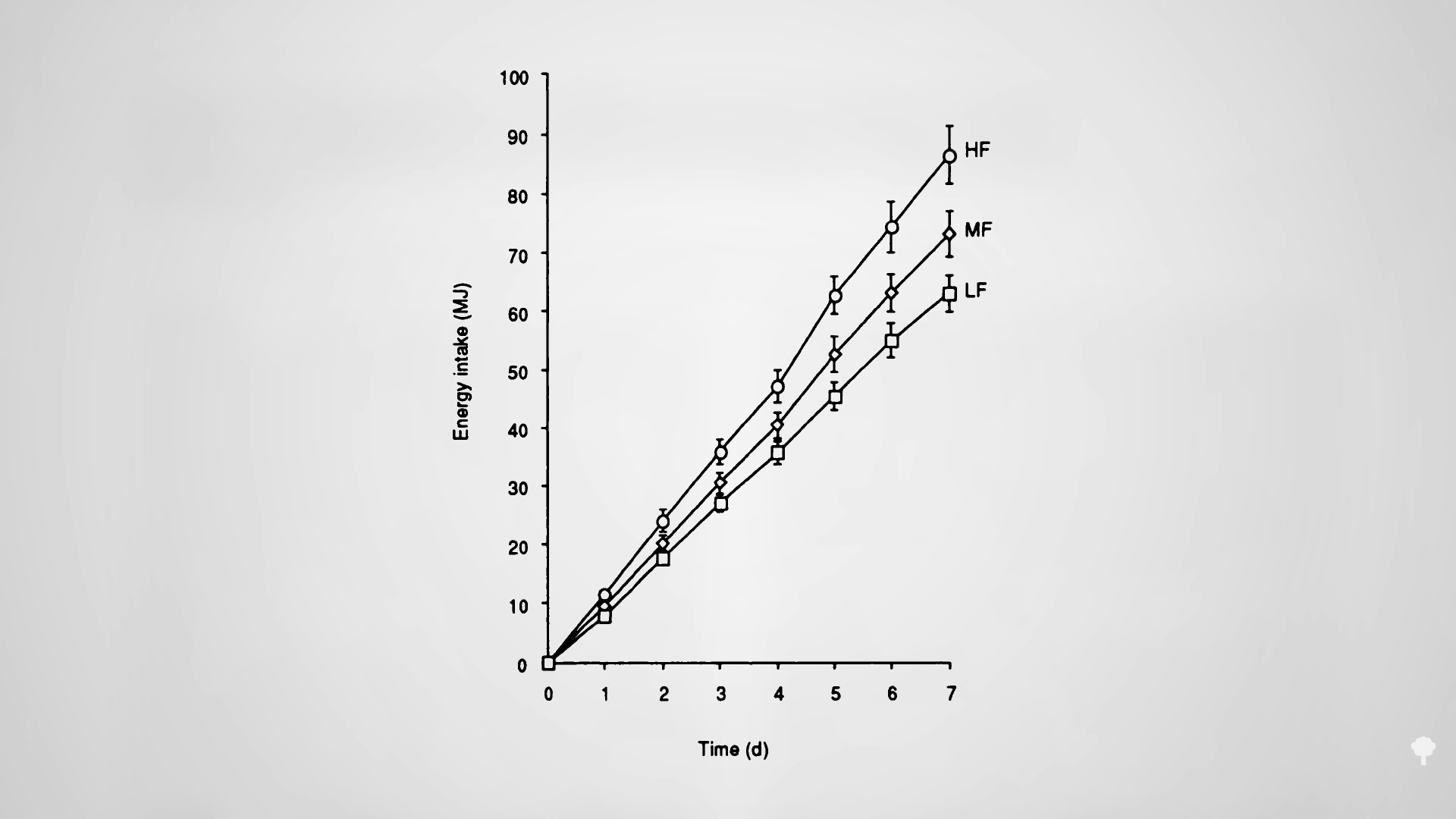
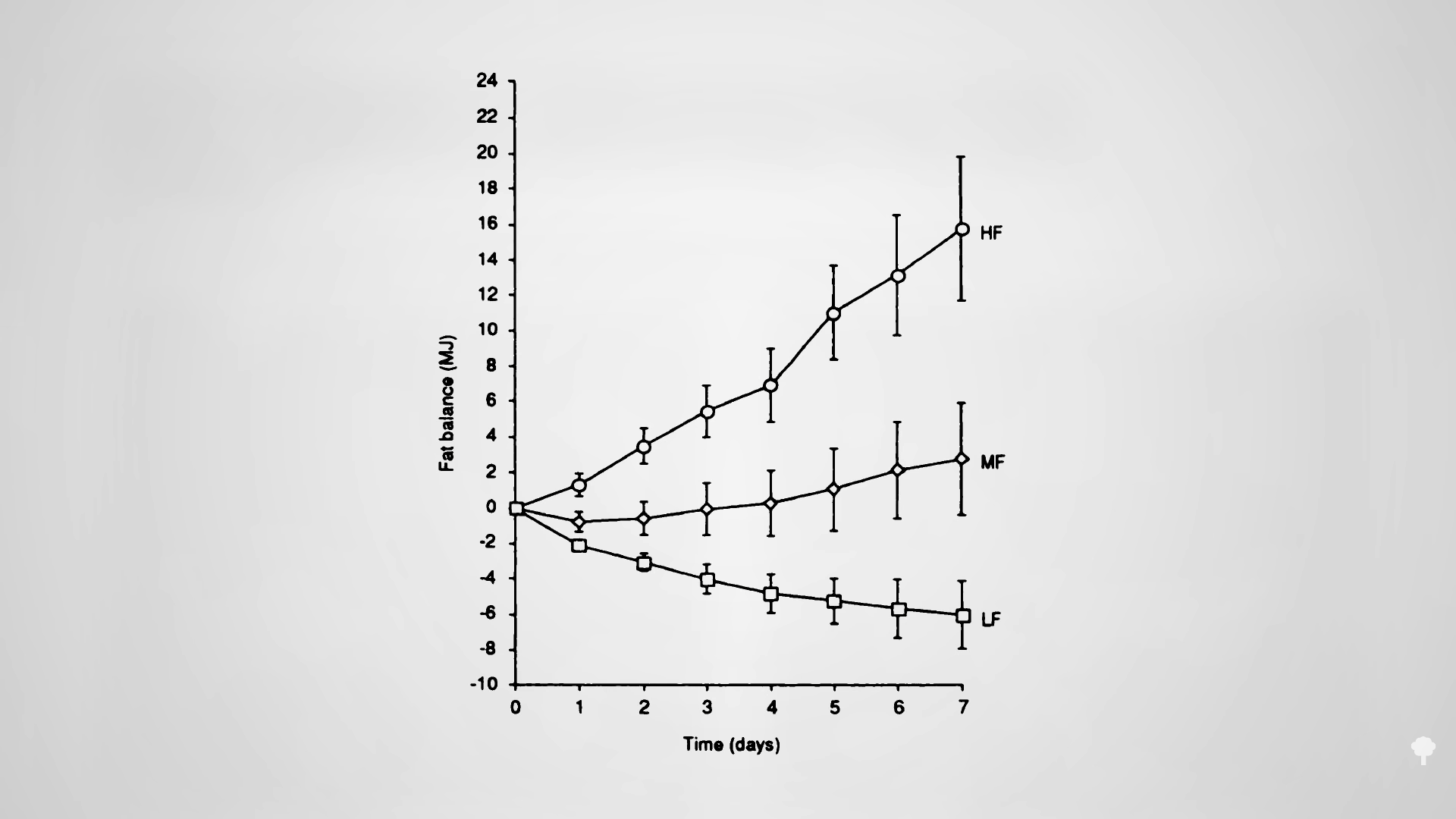 In my earlier video, I dive into how The three,500 Calorie per Pound Rule Is Fallacious. In that case, what’s The New Energy per Pound of Weight Loss Rule? Watch that video to seek out out.
In my earlier video, I dive into how The three,500 Calorie per Pound Rule Is Fallacious. In that case, what’s The New Energy per Pound of Weight Loss Rule? Watch that video to seek out out.
My e-book How To not Weight-reduction plan is all about weight reduction and the right way to break the food regimen cycle. For extra on weight reduction, see associated movies under.
See the Weight Loss matter web page for extra related movies.
[ad_2]







































Discussion about this post